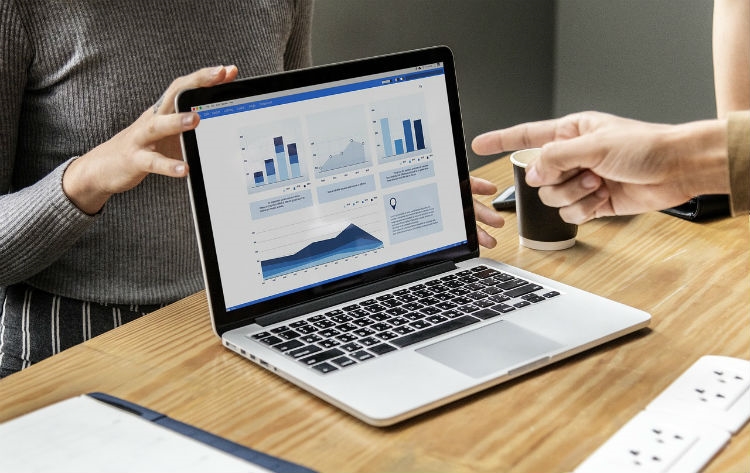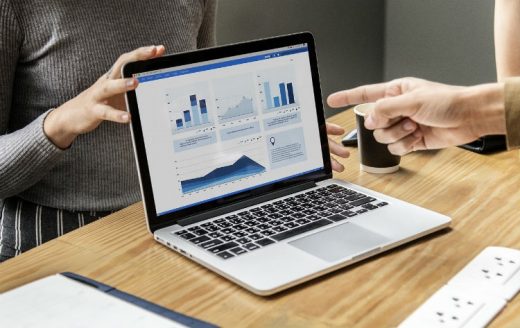The Business Benefits of Visualizing Your Data
The Business Benefits of Visualizing Your Data

As your business accumulates more and more data, it becomes increasingly difficult to sift through the information for relevant insights. Even with advanced tools at your disposal, such as AI or machine learning, there’s a massive influx of information to take in. It becomes necessary to organize the evidence into larger datasets you can view at a glance, which is exactly where data visualization comes into play.
Data visualization — is a general term that denotes a process used to better understand troves of data in a visual context. Various patterns, trends, insights and correlations can be gleaned and recognized much easier and faster. It’s achieved primarily through special tools or data visualization software.
Although incredibly old, this infographic provides a look at data visualization in action. It’s ingenious, really, breaking down data visualization in exactly the kind of visual format it calls for.
As a whole, data visualization has advanced considerably over the past few years. Instead of simple charts or graphs, the cases and laws can be used to create highly sophisticated displays like infographics, sparklines (small graphics for quick representation of a number), heat maps, geographic maps, fever charts, and a variety of graphs.
The data visualization process not only makes data more understandable, but it also makes big data applications easier to work with.
Data Is the Spice of (Business) Life
According to Experian, 95 percent of U.S. organizations use data to power business opportunities, while 84 percent believe data is an integral part of their operations and business strategies.
Being so integral to operations, it makes sense then that the data should be organized in practical, accurate ways that allow for easier consumption. But beyond that, what are the benefits of a solid data visualization strategy? What can it do for a business? Here are nine examples.
1. Visualized Data Can Be Processed Faster
The human brain is designed to process visual content and information at a much faster rate than text. In fact, researchers from the Pennsylvania School of Medicine discovered the retina is capable of transmitting data at around 10 million bits per second. Since the retina is technically part of the human brain, it means that we — as a species — can take in visual information much faster and more effectively.
This faster rate leads not just to faster ingestion and processing, but to faster action, as well. If you can discern insights at a faster rate, you can react to what’s happening in the real-world time much more rapidly, too. Taking that a step further, you can use the incoming data to make more predictive decisions.
2. Visualization Can Reveal Hidden or Missed Opportunities
The more eyes you have on a set of data, the more useful it is. More importantly, you can discover insights and trends that would have otherwise been missed or hidden. Some data — especially the actionable kind — is most useful to the people way down in the trenches. Because they’re working with a particular process, customer, or tool every day, they are better equipped to find problems or pain points that can be improved upon. Your every day user can utilize the incoming data to improve their own performance or work habits; incredibly invaluable in any business environment.
The visualization process can naturally make complex and sophisticated data stores easy to read even for the layman. These visual and artistic renderings make it easier to present to people who wouldn’t understand the raw data such as executives and c-suite managers.
3. Visualization Increases Productivity
Taking raw or rough data sets and making them more readable at a glance can help improve productivity across the board, not just for data scientists and analysts. You will be boosting the productivity and helping anyone and everyone who is going to have eyes on that information.
Even better, the data can be scoured in shorter time frames, revealing insights much faster. In fact, Aberdeen found that organizations who use visual data discovery tools are 28 percent more likely to find timely information than those who don’t. Again, this results in faster reaction times and more robust points of opportunity.
4. It Improves Data Veracity
Data is of no use to anyone if it’s not accurate or reliable. Trustworthy information is especially important in certain industries such as healthcare, marketing, and even construction. Having the wrong data can be highly detrimental. In the case of medicine — for example — it can even cost lives. That’s where data veracity comes into play, one of the five major “V’s” of data.
Visualization plays a role because it can help analysts and data managers dive deeper into the repository’s of information (stores). This results not just in new opportunities and insights, but also more accurate representations of what’s included within a dataset. Before you can process, clean, and organize large stores of data, you must be able to understand it in full. Visualization simply helps this happen on a larger scale and at a much faster rate.
5. You Can Monetize Your Data
It’s pretty obvious that, over time, you’ll build up an incredibly large store of data and information. Much of this storage of data you may believe has no use for you. However, that doesn’t necessarily mean your data storage needs to sit on a hard drive or server collecting digital dust. Instead, you can monetize the data you have available by creating more useful forms of visual content.
You already have the data available — you’re likely sitting on a huge goldmine. Why not monetize this “data gold” to extract its true value and roll that back into your business?
- It only takes five simple steps to create a sellable product from your data stores.
- Take your time organizing your data and conducting research.
- Then determine a price and finalize your product.
- Data visualization can open up opportunities, thus presenting new markets right within your own company.
Your stores of information will simply allows you to share the content and information with parties that would otherwise have no use for raw data. Think: whole new customer base.
6. Improved Business Operations and Customer Insights
Two key data points needed to run a successful business are the performance of your operations and relevant customer insights. With performance data, you can ensure your entire organization is running smoothly from top to bottom, and you can even make adjustments to improve output. With customer insights, you are better equipped to give your audience what they need in regards to your services and products.
Both concepts are remarkably simple, yet collecting the necessary data and making sense of it is not so trivial. Data visualization can help keep the data understandable by highlighting new connections as they occur between business operations, performance, and customer sentiment.
For instance, you may get information sooner about a particular product or campaign not working out. In turn, that allows you to adjust accordingly, armed with detailed insights about what will help.
7. Better Interactions and Innovative Presentations
Conventional, one-dimensional tables and paper-based charts are good for one thing and one thing only: looking. You have the chart or visual in front of you, and all you can do is read it — good or bad.
With data visualizations, however, a much more interactive and dynamic experience is involved. You can present datasets in new and exciting ways. More importantly, you can include interactive components that allow viewers to manipulate and engage with the information in real-time. “Why Do Buses Bunch” is an excellent example of an interactive and entertaining visualization. It makes the data itself more memorable and easier to retain for those participating in the experience.
8. Deeper Customization
You can only present a conventional chart or graph in so many ways. But with data visualization, you gain access to a wide variety of options — many of which include their own customizable elements. Even when using the same datasets, you can create two remarkably different visualizations depending on the type, methods, and visuals you use.
This is a small part of what helps unlock hidden insights and potential. You can take information and look at it in new, fresh ways well beyond anything that would be possible through conventional means.
9. Unlock Better Collaboration
Because visualizations are easier to read and understand, that means more people can get involved in the analytical processes. More importantly, having access to the dynamic and active systems used in data visualization means much better opportunities for collaboration. You can get more of the team involved, and you can work more efficiently alongside others using data visualization software.
Empowering Your Teams
In the end, data visualization — like any other form of data process — involves diving deeper into the information and data stores you have at your disposal. It’s not just about making the information more readable and presentable to analysts and higher-ups; it’s about empowering your entire organization. Suddenly, you can present and share content with your entire workforce, even those who would otherwise not be able to understand the data in its raw form.
Knowing all this, you can see why data visualization as a whole is highly beneficial and important to the success of your operation.
The post The Business Benefits of Visualizing Your Data appeared first on ReadWrite.
(16)


